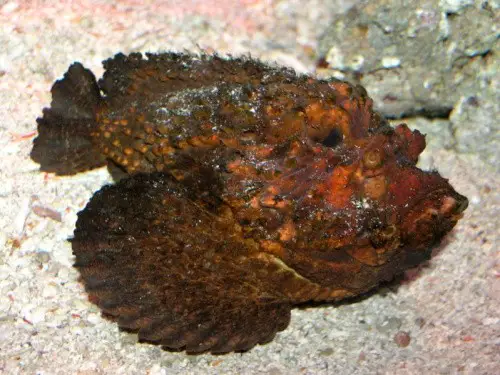There are more than 1500 species of scorpion; all are arthropods in the class 'arachnida', and so are closely related to spiders, mites and ticks. All scorpions are venomous, although most are not dangerously so. Most scorpions have a life span of two to six years.
Scorpions hunt at night; their prey includes insects, spiders, and other scorpions. Larger species also prey on small lizards, snakes and mice.
 death stalker scorpion
death stalker scorpiondealth stalker scorpion When a scorpion spots a victim, it will grab it with its claws, using its venomous tail stinger only if the prey is large or resists being eaten. If a human is stung by a scorpion, the usual symptoms are swelling, numbness and convulsions, as well as difficulty in breathing. Scorpion stings are rarely fatal to adults if medical attention is received. Children and older people are much more at risk of death, however
When a scorpion spots a victim, it will grab it with its claws, using its venomous tail stinger only if the prey is large or resists being eaten. If a human is stung by a scorpion, the usual symptoms are swelling, numbness and convulsions, as well as difficulty in breathing. Scorpion stings are rarely fatal to adults if medical attention is received. Children and older people are much more at risk of death, however
 dealth stalker scorpion
dealth stalker scorpion
 death stalker scorpion
death stalker scorpion
 Although it's only a medium-sized scorpion, the Death Stalker is one of the most deadly scorpions on Earth. Its very potent venom helps it compensate for its smaller size and narrow, weak pincers; this scorpion’s sting injects extremely toxic venom (a neurotoxin) that can cause extreme pain, fever, convulsions, paralysis, and often coma or death in humans (by heart or respiratory failure). The Death Stalker Scorpion is found in North Africa and the Middle East. It prefers a dry climate, and makes its home in natural burrows or under stones.
Although it's only a medium-sized scorpion, the Death Stalker is one of the most deadly scorpions on Earth. Its very potent venom helps it compensate for its smaller size and narrow, weak pincers; this scorpion’s sting injects extremely toxic venom (a neurotoxin) that can cause extreme pain, fever, convulsions, paralysis, and often coma or death in humans (by heart or respiratory failure). The Death Stalker Scorpion is found in North Africa and the Middle East. It prefers a dry climate, and makes its home in natural burrows or under stones.
The neurotoxins found in Death Stalker venom are being studied by scientists, who hope to find in them a treatment for some diseases, noteably some forms of brain cancer, and diabetes
 When a scorpion spots a victim, it will grab it with its claws, using its venomous tail stinger only if the prey is large or resists being eaten. If a human is stung by a scorpion, the usual symptoms are swelling, numbness and convulsions, as well as difficulty in breathing. Scorpion stings are rarely fatal to adults if medical attention is received. Children and older people are much more at risk of death, however
When a scorpion spots a victim, it will grab it with its claws, using its venomous tail stinger only if the prey is large or resists being eaten. If a human is stung by a scorpion, the usual symptoms are swelling, numbness and convulsions, as well as difficulty in breathing. Scorpion stings are rarely fatal to adults if medical attention is received. Children and older people are much more at risk of death, however dealth stalker scorpion
dealth stalker scorpion death stalker scorpion
death stalker scorpion Although it's only a medium-sized scorpion, the Death Stalker is one of the most deadly scorpions on Earth. Its very potent venom helps it compensate for its smaller size and narrow, weak pincers; this scorpion’s sting injects extremely toxic venom (a neurotoxin) that can cause extreme pain, fever, convulsions, paralysis, and often coma or death in humans (by heart or respiratory failure). The Death Stalker Scorpion is found in North Africa and the Middle East. It prefers a dry climate, and makes its home in natural burrows or under stones.
Although it's only a medium-sized scorpion, the Death Stalker is one of the most deadly scorpions on Earth. Its very potent venom helps it compensate for its smaller size and narrow, weak pincers; this scorpion’s sting injects extremely toxic venom (a neurotoxin) that can cause extreme pain, fever, convulsions, paralysis, and often coma or death in humans (by heart or respiratory failure). The Death Stalker Scorpion is found in North Africa and the Middle East. It prefers a dry climate, and makes its home in natural burrows or under stones.The neurotoxins found in Death Stalker venom are being studied by scientists, who hope to find in them a treatment for some diseases, noteably some forms of brain cancer, and diabetes



No comments:
Post a Comment